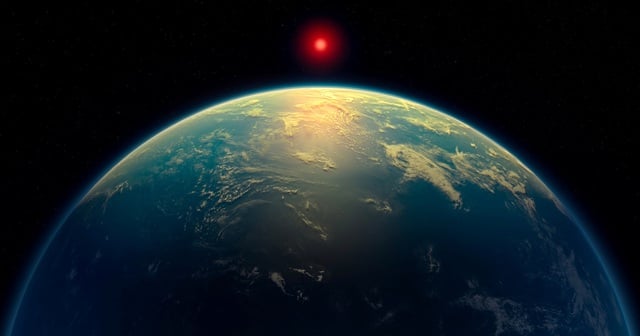The Guardian newspaper on April 17 quoted astronomers as saying that they had discovered on a giant planet 124 light years from Earth the strongest evidence yet that extraterrestrial life may be developing outside the solar system.
Observations by the James Webb Space Telescope of a planet called K2-18 b appear to have revealed chemical traces of two compounds that on Earth are known to be produced by life.
The discovery of the chemicals dimethyl sulfide (DMS) and dimethyl disulfide (DMDS) would not prove alien biological activity, but could help answer the question of whether we are alone in the universe.
"This is the strongest evidence to date for biological activity outside the solar system. We are very cautious. We have to ask ourselves whether the signal is real and what it means," said Professor Nikku Madhusudhan, an astrophysicist at the University of Cambridge (UK), who led the observation team.
“Decades from now, we may look back at this moment and realise that it was the moment when life was so close. This could be the pivotal point, when suddenly the fundamental question of whether we are alone in the universe becomes something we are able to answer,” he added.
Others are more skeptical, with questions remaining about whether the general conditions on K2-18 b are conducive to life and whether DMS and DMDS, largely produced by marine phytoplankton on Earth, can be considered reliable biosignatures.
At a distance of more than 120 light-years, there is little prospect of settling the debate through close-up observations, but Mr Madhusudhan notes that this is not a barrier to discovering black holes or other cosmic phenomena.
“In astronomy, the question is never about getting there. We're trying to determine whether biological laws are universal in nature. I don't see it as, 'We have to go swimming in water to catch fish,'” he said.
(According to thanhnien.vn)
Source: http://baovinhphuc.com.vn/Multimedia/Images/Id/127585/Tim-thay-bang-chung-manh-me-nhat-ve-su-song-dang-phat-trien-ngoai-trai-dat




![[Photo] Chinese, Lao, and Cambodian troops participate in the parade to celebrate the 50th anniversary of the Liberation of the South and National Reunification Day](https://vphoto.vietnam.vn/thumb/1200x675/vietnam/resource/IMAGE/2025/4/30/30d2204b414549cfb5dc784544a72dee)
![[Photo] Cultural, sports and media bloc at the 50th Anniversary of Southern Liberation and National Reunification Day](https://vphoto.vietnam.vn/thumb/1200x675/vietnam/resource/IMAGE/2025/4/30/8a22f876e8d24890be2ae3d88c9b201c)
![[Photo] The parade took to the streets, walking among the arms of tens of thousands of people.](https://vphoto.vietnam.vn/thumb/1200x675/vietnam/resource/IMAGE/2025/4/30/180ec64521094c87bdb5a983ff1a30a4)


















![[Photo] Performance of the Air Force Squadron at the 50th Anniversary of the Liberation of the South and National Reunification Day](https://vphoto.vietnam.vn/thumb/1200x675/vietnam/resource/IMAGE/2025/4/30/cb781ed625fc4774bb82982d31bead1e)




































































Comment (0)